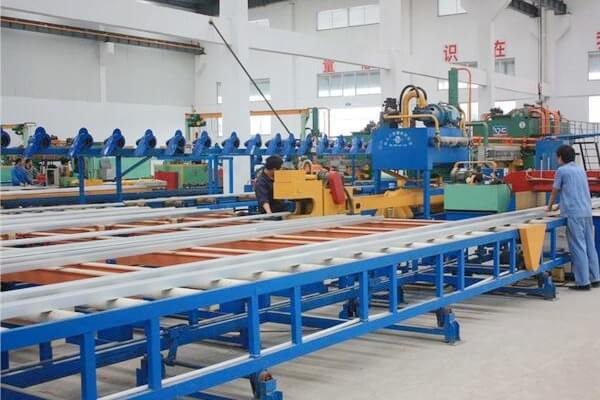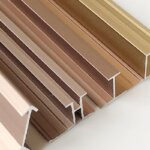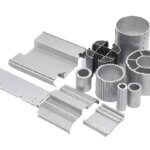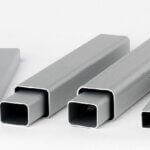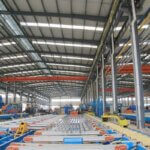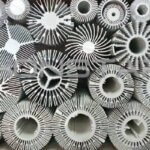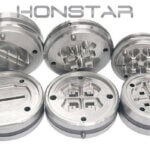What is the production process of custom aluminum extrusion
What is the production process of custom aluminum extrusion
Custom aluminum extrusion is a manufacturing process that involves shaping aluminum alloys into specific profiles with a cross-sectional design tailored to meet the requirements of a particular application.
This process typically starts with an aluminum billet, which is heated and forced through a shaped die to create the desired profile.
Once extruded, the aluminum profiles can be cut, machined, and finished according to the specific needs of the customer.
Custom aluminum extrusion involves transforming a piece of raw aluminum into a specific shape with a precise cross-section, tailored to your desired design.
Here’s a breakdown of the key steps involved:
1. Design and Engineering:
You begin by providing your desired profile design, including its dimensions, tolerances, and any special features.
This can be done through technical drawings, CAD models, or detailed specifications.
The manufacturer analyzes the design to ensure technical feasibility and optimize the extrusion process for efficiency and cost-effectiveness.
2. Die Design and Fabrication:
A custom die is created based on your profile design. This specialized tool determines the final shape and form of the extruded aluminum.
Die materials and construction vary depending on the complexity of the profile and production volumes. High-quality steel ensures durability and dimensional accuracy.
3.Billet Preparation:
An aluminum billet, a cylindrical bar of the chosen alloy, is cut to the appropriate length for the desired profile length.
The billet is preheated to a specific temperature, typically around 400-500°C, to make it malleable and ready for extrusion.
4. Extrusion Process:
The preheated billet is loaded into the extrusion press, a powerful hydraulic machine.
Under immense pressure, the softened aluminum is forced through the die opening, taking its shape as it emerges.
The extruded profile is then cooled and straightened to achieve the desired final dimensions and straightness.
5. Post-Processing:
Depending on your requirements, the extruded profile may undergo additional processes like:
Cutting: Cut to specific lengths as per your specifications.
Punching: Holes or other features are punched into the profile for further assembly or functionality.
Machining: Additional machining may be required for precise dimensions or intricate details.
Finishing: Anodizing, powder coating, or painting can be applied for aesthetic or functional purposes.
6. Quality Control and Inspection:
Throughout the process, rigorous quality control checks ensure dimensional accuracy, surface finish, and adherence to specifications.
The final product is inspected and tested before being shipped to you.
Additional Points:
Minimum wall thickness requirements dictate the smallest permissible thickness for each profile depending on its shape and size.
Different aluminum alloys offer varying strengths, corrosion resistance, and machinability to suit specific needs.
Experienced manufacturers can advise on design optimization and cost-effective solutions for your custom aluminum extrusion project.
Overall, custom aluminum extrusion offers a versatile and efficient way to create unique and durable aluminum profiles for diverse applications.
Understanding the production process helps you make informed decisions and collaborate effectively with your manufacturer to achieve your desired results.
Here are some features and advantages of custom aluminum extrusions:
Features:
Versatility: Aluminum extrusion allows for the creation of a wide range of complex and intricate shapes, making it suitable for various applications across different industries.
Lightweight: Aluminum is inherently lightweight, which is advantageous for applications where weight is a critical factor, such as in the automotive and aerospace industries.
Corrosion Resistance: Aluminum naturally forms a protective oxide layer that provides excellent resistance to corrosion, enhancing the durability and longevity of extruded products.
High Strength-to-Weight Ratio: Despite being lightweight, aluminum extrusions can offer high strength, providing a favorable strength-to-weight ratio.
Temperature Resistance: Aluminum retains its structural integrity at both high and low temperatures, making it suitable for applications in diverse environmental conditions.
Conductivity: Aluminum is a good conductor of heat and electricity, making it suitable for applications in heat sinks, electrical components, and more.
Aesthetic Appeal: Aluminum extrusions can be produced with a smooth finish, and they are amenable to various surface treatments and finishes, allowing for a polished and aesthetically pleasing appearance.
There are several key reasons why custom aluminum extrusion is a popular choice for a wide range of applications:
Versatility:
Shape and Size: Aluminum extrusions can be created in an incredibly wide variety of shapes and sizes, limited only by the design’s complexity and the physical limitations of the extrusion press.
This makes them ideal for applications where standard shapes won’t suffice, allowing for precise customization to unique needs.
Finish and Color: Customization extends beyond just shape.
Aluminum extrusions can be anodized, painted, or powder coated in a vast array of colors and textures, further enhancing their visual appeal and functionality.
Strength and Lightweight:
Strength-to-Weight Ratio: Aluminum boasts a superb strength-to-weight ratio, making it an ideal choice for applications where both structural integrity and lightness are crucial.
This can lead to weight savings in products, leading to improved efficiency and performance.
Durability: Aluminum naturally forms a protective oxide layer on its surface, offering good resistance to corrosion and weathering.
This ensures long-lasting performance and reduces the need for frequent maintenance.
Cost-Effectiveness:
Material Efficiency: The extrusion process minimizes material waste compared to other fabrication methods, leading to cost savings.
Additionally, aluminum is readily available and relatively inexpensive, further enhancing its overall affordability.
Design Optimization: Custom extrusions can integrate multiple features into a single component, eliminating the need for separate parts and assembly costs.
This simplifies design, reduces production time, and lowers overall expenses.
Other Advantages:
Machinability: Aluminum is easily machined and welded, making it compatible with various finishing and joining techniques.
This allows for further customization and integration with other components.
Conductivity: Aluminum is a good conductor of heat and electricity, making it suitable for applications involving heat sinks, electrical enclosures, and other components requiring these properties.
Sustainability: Aluminum is highly recyclable, with over 70% of all ever-produced aluminum still in use today.
This makes it an environmentally friendly choice for businesses and consumers alike.
In summary, the popularity of custom aluminum extrusion stems from its exceptional versatility, strength-to-weight ratio, cost-effectiveness, and wide range of additional benefits.
Its ability to be tailored to specific needs makes it an ideal solution for engineers, designers, and manufacturers across various industries.

